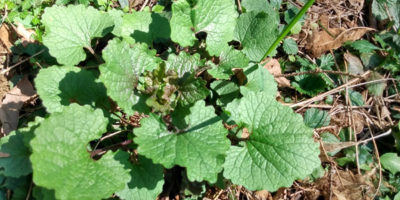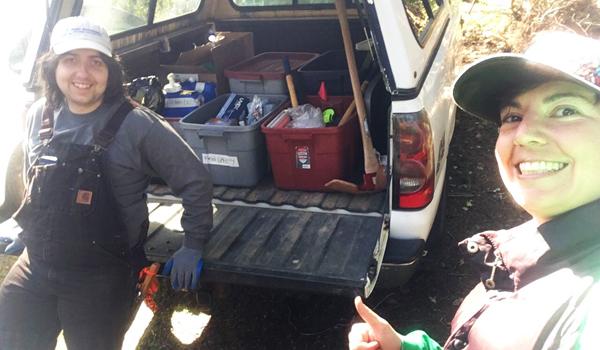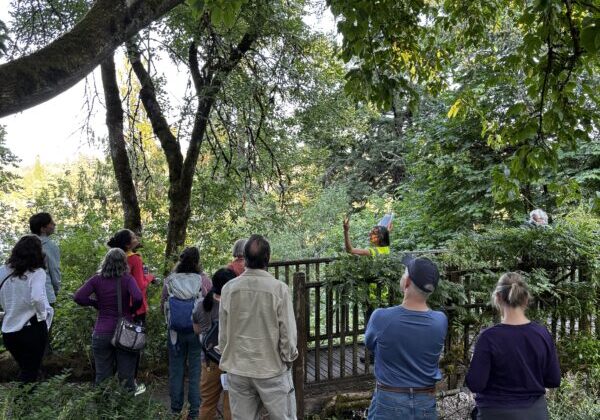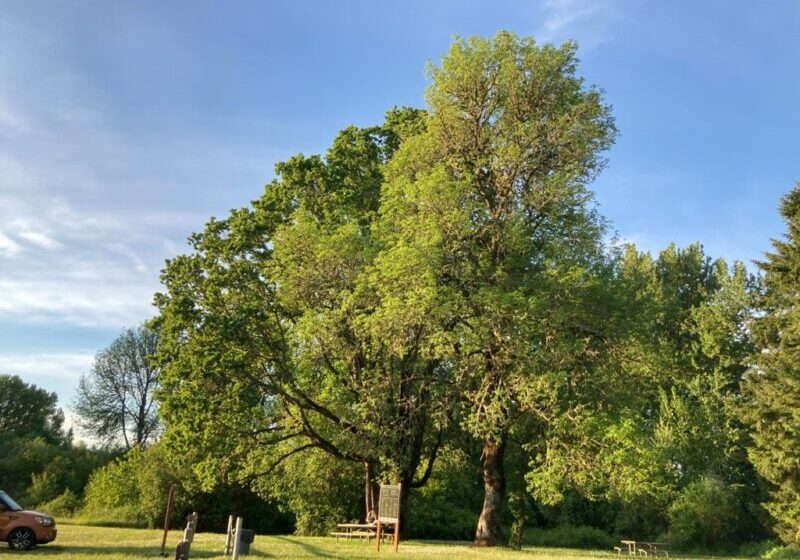By Cole Carr, GIS & Field Conservation Intern
A global pandemic hits, putting the world in quarantine. The streets of Portland are at a standstill, minus the occasional bicyclist. What does that mean for a soon-to-be college graduate? Three months of doom, doing homework, staring longingly out the window?
There’s no time for that, not with all of the Garlic mustard that has spread around Multnomah County.
The internship I had just started with the West Multnomah Soil & Water Conservation District (WMSWCD) had saved me from the COVID-19 lockdown. After getting used to Zoom-based meetings and trainings, it was time for me to head out into the field for essential work of helping manage Garlic mustard, as part of WMSWCD’s Early Detection Rapid Response (EDRR) program.
Wait…outside? During quarantine? Sounds good to me! Now, what’s Garlic mustard?
Admittedly, as a geographic information system (GIS) intern, who knows way more about orthorectifying aerial imagery and geospatial analysis than plant identification, I was a little overwhelmed at first. But, after seeing the plant in person, and writing an essay for my biogeography class, I began to understand Garlic mustard quite well, and developed a keen eye for it.
Garlic mustard, Alliaria petiolata, is an invasive plant that is found all over North America, including Oregon. Like other invasive species, Garlic mustard negatively impacts the health of forests and water resources. It dominates shaded woodland areas, reducing the ability for native plants to thrive while also decreasing biodiversity and impacting available food supplies for native foraging animals.
I was able to learn about Garlic mustard and all of its phenological stages. My first day out in the field, I was taught how to spot Garlic mustard seedlings and rosettes.

Wait… that’s Garlic mustard? How would I be able to spot it when it looks so much like other small plants?
After even a few days in the field, I began to get the hang of it. The particular leaf pattern, heart/kidney shapes, the lack of leaflets, the purple tint by the roots, the special garlicky smell… Seedlings and rosettes quickly became more familiar and easier to find and remove.
Spotting Garlic mustard got even easier once the plants started flowering. Garlic mustard is biennial, meaning that the plants don’t seed until the second year. The second year, flowering plants are tall with easy to recognize white flowers with four petals. They would show up sometimes in large patches, and this was the key time to remove the plants, before they set seed. The plant’s tiny pepper flake sized seeds can lie dormant in the soil for up to 10 years, leading to greater infestations.
I am so grateful for all of the time outside this spring, even during the spell of very warm weather. I’m grateful for the opportunity to foster friendships with my co-workers and also to be friendly with the district residents that we served this season. I feel like there is a world out there beyond my bedroom window, and I’m grateful to have had the chance to be out and part of it, of course, while also practicing safe distancing and other precautions during the time of COVID-19. I’ve gotten to hike, to exercise, to meditate, to laugh and joke with others, to drive through beautiful landscapes, and to make a difference by removing some of the most invasive plants in the region.
The EDRR program has done amazing work to remove Garlic mustard within the district. To date this season, we have removed 1820 pounds of Garlic mustard across 10 acres! To be able to participate in the program has been a wonderful privilege that I will never forget. It has given this stressful, difficult time in quarantine purpose and inspiration. A special thanks to West Multnomah SWCD for allowing me an opportunity to be their GIS intern, to the wonderful staff for being my friends and “partners in crime”, and to the residents that have made this work possible! Stay safe out there!



